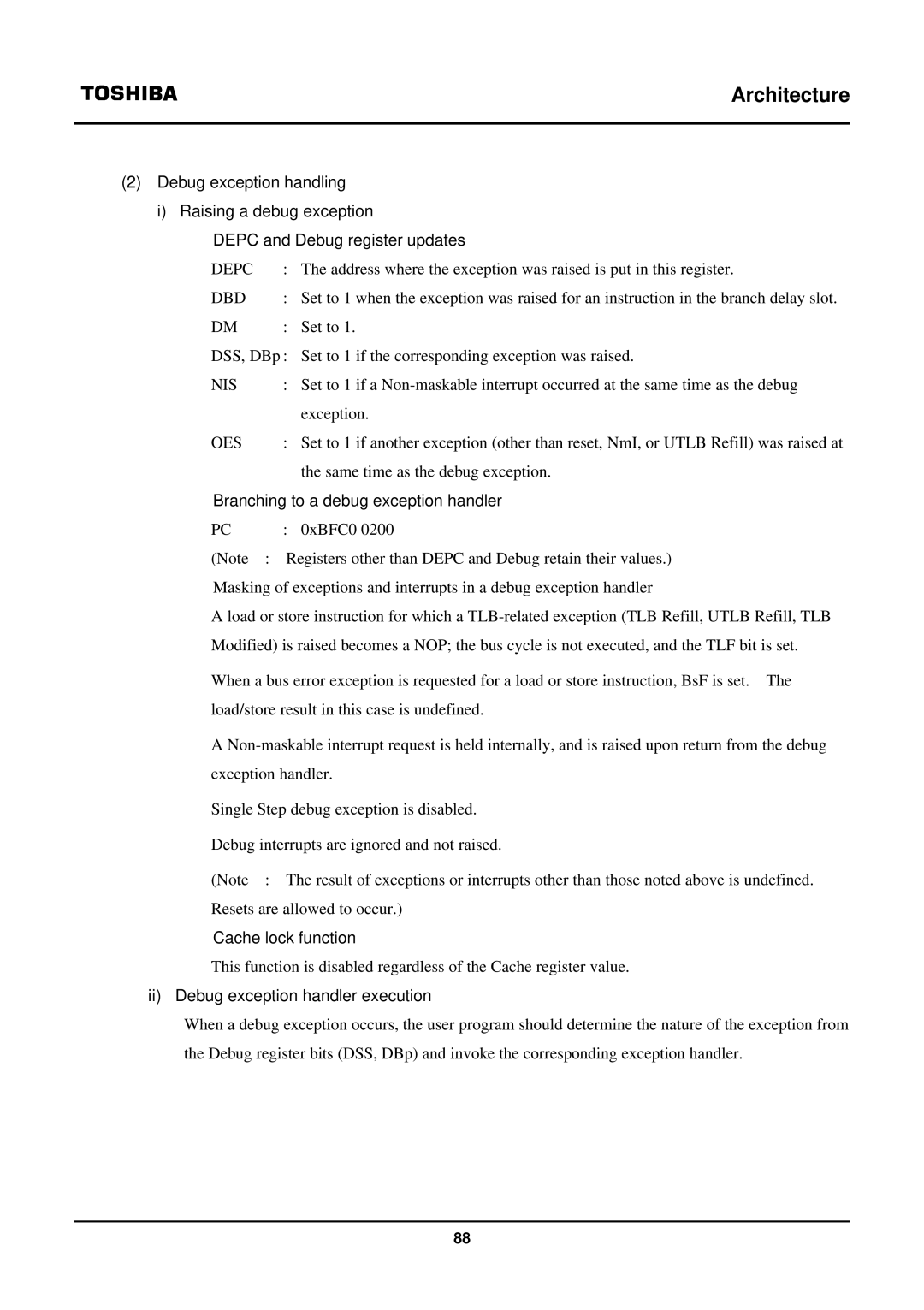
Architecture
(2)Debug exception handling
i)Raising a debug exception
nDEPC and Debug register updates
DEPC | : | The address where the exception was raised is put in this register. |
DBD | : | Set to 1 when the exception was raised for an instruction in the branch delay slot. |
DM | : | Set to 1. |
DSS, DBp : | Set to 1 if the corresponding exception was raised. | |
NIS | : | Set to 1 if a |
|
| exception. |
OES | : | Set to 1 if another exception (other than reset, NmI, or UTLB Refill) was raised at |
|
| the same time as the debug exception. |
nBranching to a debug exception handler
PC | : 0xBFC0 0200 |
(Note | : Registers other than DEPC and Debug retain their values.) |
nMasking of exceptions and interrupts in a debug exception handler
A load or store instruction for which a
When a bus error exception is requested for a load or store instruction, BsF is set. The load/store result in this case is undefined.
A
Single Step debug exception is disabled.
Debug interrupts are ignored and not raised.
(Note : The result of exceptions or interrupts other than those noted above is undefined. Resets are allowed to occur.)
nCache lock function
This function is disabled regardless of the Cache register value.
ii) Debug exception handler execution
When a debug exception occurs, the user program should determine the nature of the exception from the Debug register bits (DSS, DBp) and invoke the corresponding exception handler.
88
